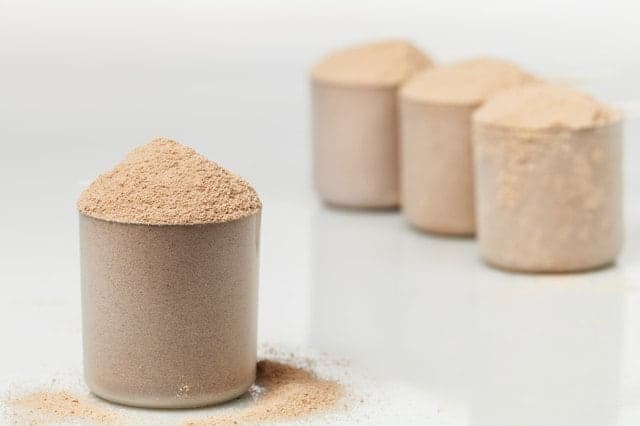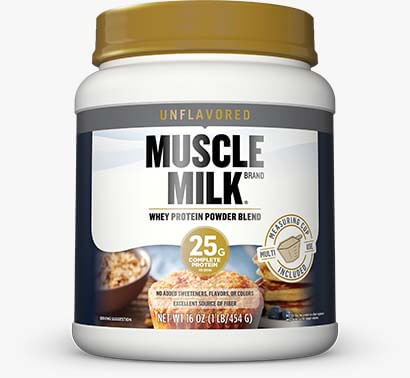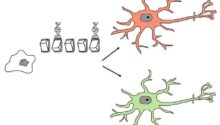 Muscles are built in the gym, the iron fortress, the Parthenon of plates. However, they are also built into the kitchen. All the hard work you’re putting into building a better physique won’t mean much if your muscles aren’t receiving the proper nutrition.
Muscles are built in the gym, the iron fortress, the Parthenon of plates. However, they are also built into the kitchen. All the hard work you’re putting into building a better physique won’t mean much if your muscles aren’t receiving the proper nutrition.
Although it’s been well established that protein is essential to the muscle-building process, where are we supposed to get it? Getting all the protein you need from food is a tough endeavor, especially if you have a busy schedule. Even if you’re eating 3 or 4 protein-packed meals per day, you’re likely not hitting your daily protein intake if you’re lifting heavy and trying to pack on mass.
The helping hand that most lifters rely on to hit this macro requirement is protein supplements. A popular question among newer athletes is the decision between powders and ready-made shakes. But which is better? This article will dive into the key differences between each protein form to show you which method is more effective for muscle growth. It will compare the two most popular choices in each category: Whey and Muscle Milk.
WHEY PROTEIN VERSUS MUSCLE MILK
QUALITY AND AMOUNT OF PROTEIN
WHEY PROTEIN
- Whey proteins are available in a few different varieties – concentrate, isolate, and hydrolysate – and each has varying quality.
- Whey concentration is the least pure in protein concentration (usually around 70-80%) and separates the highest in purity (usually about 90% or above).
- Whey hydrolysate is pre-digested whey, which is absorbed by your body more readily.
- A typical serving of whey isolate powder will have around 25g of the highest-purity protein.
MUSCLE MILK
- Muscle Milk contains a blend of several kinds of protein. Whey concentrate, whey hydrolysate, and a type of protein called casein, which breaks down slowly, can all be found in Muscle Milk.
- This is great for diversity and a protein that breaks down at different points, but it also equates to a protein that’s not as saturated with amino acids as a high-quality whey isolate powder.
- A typical serving of Muscle Milk (14oz shake) will have around 20-25g of protein, similar to the standard whey powder, but as mentioned above, the purity of this protein is much lower.
OTHER MACROS
WHEY PROTEIN
Whey proteins are competent at what they do because they are generally deficient in fats and carbohydrates. This keeps the calorie count low so that it can be used frequently, and multiple scoops are a possibility for those looking to jack up their protein intake.
Carbohydrates can be higher in certain supplements that are heavily flavored because of the sugars contained within. The tidiness of many protein powders and lack of fillers makes them extremely versatile so that people with any fitness goal can make efficient use of them.
MUSCLE MILK
A 14-ounce Muscle Milk protein shake contains about 100 more calories per serving than a whey protein powder, making it a significantly heavier supplement. Muscle Milk also contains more fats and carbohydrates than whey protein powder, which is probably why it is such a widely consumed and popular supplement – because it is heavily flavored.
Although extra calories can serve their purpose for someone in the bulking phase of their season, it takes away a bit of the versatility that can be offered by Muscle Milk. It can’t serve the dual purpose that many Whey protein powders serve as being a protein that can be used in a weight loss regimen.
VERSATILITY
WHEY PROTEIN
One of the best things about whey protein is that we can use it in more ways than just as a shake mixed with water. Whey can be combined with whole, 2%, skim, almond, or soy milk for drinking, and it can be used in several other ways as well. For example, cooking with whey protein is becoming pretty popular, as it can be used to produce high-protein snacks for a boost throughout the day.
The only drawback to mixing powder supplements is that certain supplements can have a questionable taste to them. With that said, if you find a powder that generally gets good taste ratings, like Optimum Nutrition, then you can blast your protein snack with your favorite flavor without a worry.
MUSCLE MILK
While Muscle Milk certainly has its uses as a higher calorie protein shake, it doesn’t offer a lot in the way of versatility. If you buy it, and you drink it, that’s pretty much it.
VERDICT
If you’re trying to lose weight, Muscle Milk has over 100 more calories than most whey protein powders. Unlike most dependable whey protein powders, Muscle Milk does not contain high-quality protein to assist you in gaining weight. You should go with Whey if you’re looking to supplement your protein intake and are on the fence between Muscle Milk and a whey supplement. So go grab some Whey and put the Muscle Milk back on the shelf.


